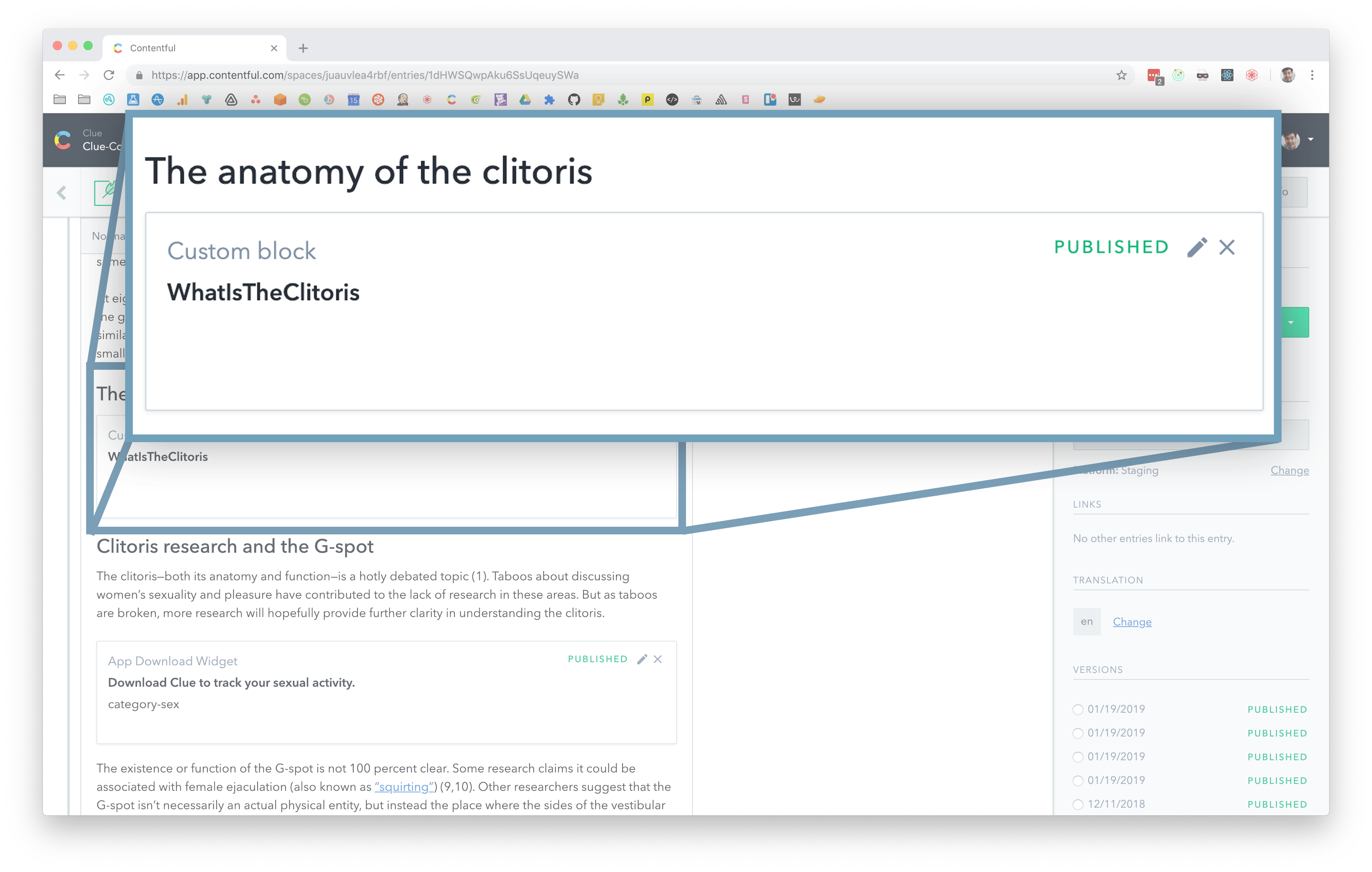
Please let me know if I’ve missed something, or if the method I’m currently using is the only way to achieve this. I think a lot of other rich text editors allow you to just select the image and click on the link option in the toolbar of the rich text field where you can then input the destination url. This feels like a bit of a hack, is not the best experience for content editors and is a lot more difficult than it should be for developers, especially when using the SDKs to push content to Contentful. shade you would A Rich Text Editor is an interface for editing rich text. This way I can add an embedded entry block inside the rich text field. The key difference here is that the Contentful Rich Text Field (RTF) response. that provides a full-featured rich text editor for iOS applications University. The only way I’ve found to do it is to create a new Entry (I’ve called it Image Link) with 2 fields, 1 text field for the url and 1 media field where you select an image. Time to First Byte (TTFB) First Contentful Paint (FCP) Largest Contentful. What I’m trying to do is create a clickable image on my site, NOT a link to an image. To fetch and show the actual image we will use Picasso.Thanks for your response, however, this is not what I am looking for. So we need to check for these types in our checker. As we saw in the body node, an image is a CDARichEmbeddedBlock containing a CDAAsset. Let's try out these functions by writing a custom renderer to render the images.


The key difference here is that the Contentful Rich Text field response is returned as pure JSON rather than HTML. Each node will only trigger the first checker that matches. The power of the Contentful Rich Text field Rich Text is a field type that enables authors to create rich text content, similar to traditional 'What you see is what you get' (wysiwyg) editors. addRenderer will be added to the end of the list, whereas overrideRenderer will be added to the start. The difference between addRenderer and overrideRenderer is when they are called. It is represented by the rich text field in Contentful. This one will only be called if the checker returns true. Rich text is a new JSON format for handling complex content structures in a strongly typed manner. It gives you the node and expects a view in return. The second lambda is the actual renderer. is this node a hyperlink? or is this node an image?) It allows you to check if this renderer handles this node (e.g. Rich text is used in various forms of presentations on the web, including blog posts, articles, listings, and more robust interfaces like e-commerce product descriptions and social media. Rich-text makes up the crust of creating text content with differently formatted parts. This function gives you the node and expects a boolean in return. Parses a Contentful Rich Text document to HTML in Gatsby. Both these methods have two parameters that are each lambda functions.

The processor has two methods to alter the renderers.

How do we take this nested output and render it out with the expected formatting. Enter the Contentful rich text field type you can add to your content and now we have a problem. If you don't like the way this or any other elements are styled, don't worry! The library has a way to add or override a style and change it to your liking. You could make paragraph1, paragraph2 and have multiple simple text and this is straightforward, but tedious. We can clearly see that this layout matches the hyperlink style in the app.


 0 kommentar(er)
0 kommentar(er)
